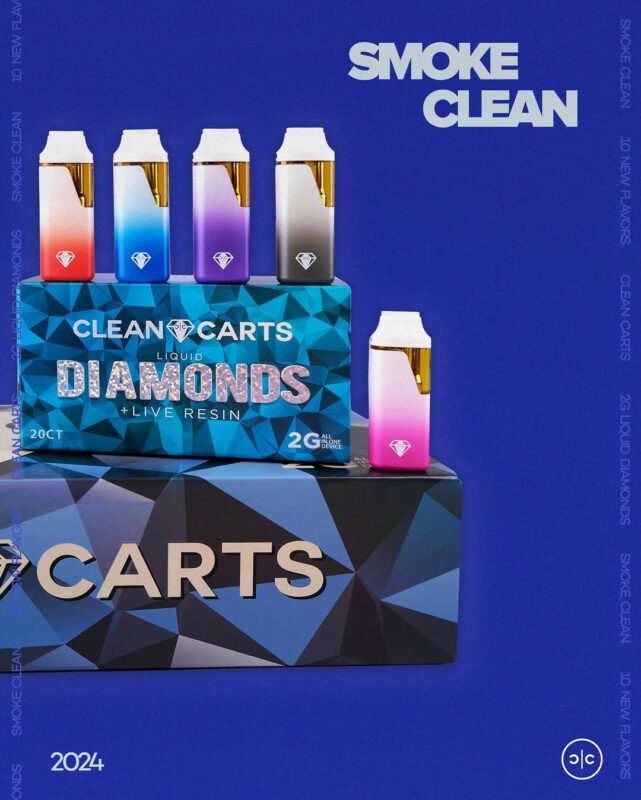Defining Purity: What Makes a “Clean” 2g Cannabis Concentrate?
Understanding the Search Intent Behind “Clean 2g Concentrate”
The phrase “clean 2g concentrate” reflects a modern cannabis consumer’s primary concern: product safety. This search query isn’t just about finding a potent product; it’s about finding one that is safe, pure, and free from harmful contaminants. The goal of this article is to provide a definitive, trustworthy guide that directly addresses this concern. By breaking down the science of purity, from extraction methods to lab testing, we can answer the user’s implicit question: “Is this product safe for me to use?”
What Defines a Truly “Clean” Cannabis Concentrate? The Science of Purity
A cannabis concentrate is considered “clean” when it is meticulously crafted to contain only the desired compounds—primarily cannabinoids like Δ9-tetrahydrocannabinol (Δ9−THC) and Cannabidiol (CBD), and aromatic terpenes—while systematically excluding unwanted or harmful substances. These unwanted substances often include residual solvents, pesticides, heavy metals, and microbial impurities.

The pursuit of a clean product begins at the source: the cultivation of the cannabis plant. If the plant is grown using synthetic pesticides or on soil contaminated with heavy metals, these substances will be absorbed and carried through the extraction process, becoming more concentrated in the final product. For a concentrate to be truly clean, transparency and rigorous quality control must be maintained from seed to sale clean 2g.
The essence of a high-quality concentrate is its ability to capture the plant’s full chemical profile. This is often referred to as the “entourage effect,” a concept where cannabinoids and terpenes work together to modulate the overall physiological and psychological effects. A clean concentrate preserves this delicate synergy, ensuring that the consumer experiences the full, unadulterated essence of the strain. In contrast, products that are not clean may contain residual chemicals that not only pose health risks but also compromise the very integrity of the concentrate’s flavor and therapeutic potential.
Extraction Methods: The Purity Debate Between Science and Nature
The method used to extract cannabinoids and terpenes is a major factor in a product’s final purity. Consumers searching for a clean 2g concentrate are often interested in the difference between solvent-based and solventless methods.
Solvent-Based Extraction: A High-Tech Approach to Purity
This process uses chemicals, or solvents, to separate the desired compounds from the plant material. Common solvents include hydrocarbons like butane (C_4H_10) and propane (C_3H_8), as well as ethanol and carbon dioxide (CO_2) clean 2g. The process typically occurs in a sophisticated closed-loop system, where the solvent is introduced to the plant material to create a solution rich in cannabis compounds.
The key to purity in this method lies in the post-extraction “purging” process. The crude extract must be meticulously heated and placed under a vacuum to evaporate and remove all residual solvents. If this step is not performed correctly, trace amounts of these chemicals can remain in the concentrate, which can pose health risks upon inhalation clean 2g. Reputable brands that use solvent-based methods have advanced equipment and strict protocols to ensure a clean final product.
- For the Nerds: According to testing standards in many legal markets, the allowable limit for residual butane is often 5,000 parts per million (ppm), which is still a tiny amount. For more toxic, carcinogenic solvents like benzene, the limit is a much stricter 2 ppm. A product that passes these rigorous tests is scientifically considered a clean 2g concentrate, even though a solvent was used in its production. A report from US Cannalytics emphasizes the importance of using advanced gas chromatography-mass spectrometry (GC-MS) instrumentation to accurately quantify these residual solvents in the ppm range, a process that is essential for ensuring safety.
Solventless Extraction: The Organic “Gold Standard”
This method uses only physical means—like heat, pressure, or ice water—to separate the trichomes from the plant. This approach completely bypasses the need for chemical solvents, eliminating the risk of residual solvent contamination.
- Rosin Pressing: This technique involves applying heat and pressure to cannabis flower, kief, or bubble hash. The heat and pressure force the cannabinoid- and terpene-rich resin out of the plant material. The resulting oil, known as rosin, is highly prized for its purity and robust flavor.
- Ice Water Extraction (Bubble Hash): This method uses a combination of ice, water, and agitation to freeze and break off the trichomes from the plant. The trichomes sink to the bottom of the water and are then collected using a series of fine-mesh bags clean 2g. This process, which is entirely mechanical, is renowned for its ability to produce a pure and potent product without any chemical additives.
Products like rosin and bubble hash are often considered the pinnacle of purity and are a favorite for consumers who prioritize a truly clean 2g concentrate. The absence of chemical solvents means there is zero risk of residual solvent contamination. While solventless is often seen as the “gold standard” for purity, it’s important to remember that a solvent-based concentrate can be equally clean if the proper safety and testing measures are followed clean 2g. The key is in the rigor of the purification and testing process.
The Contaminants That Compromise Purity
A “clean 2g concentrate” is more than just solvent-free. A comprehensive analysis of product purity must also account for other potential threats. These contaminants, if present, can pose significant health risks, especially when the product is heated and inhaled.
1. Residual Solvents: A Lingering Threat
While the use of cannabis extracts instead of raw plant material reduces many risks associated with smoking, concentrates may pose different health hazards if they are not free of the organic, or “residual,” solvents used in the extraction process. These solvents, which include butane, propane, and ethanol, are volatile organic compounds (VOCs). If not properly purged, they can remain in the final product as a liquid or gas.
- The Health Angle: According to Ellutia, residual solvents are categorized based on their toxicity. Class 1 solvents, like benzene, are known to be carcinogenic and must be detected at extremely low trace levels. Class 2 solvents, such as methanol or toluene, have lower toxicity but are still tightly regulated. Inhalation or ingestion of these chemicals can have adverse health effects on the nervous system, lungs, kidneys, and liver. For a clean 2g concentrate to be considered safe, it must be verified to have residual solvent levels below established regulatory thresholds.
2. Pesticides & Fungicides: Unseen Chemical Residue
These chemicals are used during the cultivation process to protect the cannabis plant from pests and molds. While essential for crop management, many of these substances are not safe for human consumption or inhalation. When a concentrate is made from contaminated plant material, these pesticides can become highly concentrated, posing risks that range from minor allergic reactions to neurological and carcinogenic effects.
- For the Nerds: The use of pesticides is tightly controlled, but regulations can vary. A study from Sigma-Aldrich highlights the importance of using certified reference materials (CRMs) to test for hundreds of pesticide residues. For example, a common pesticide, myclobutanil, when heated, can break down into hydrogen cyanide—a highly toxic chemical. A truly clean 2g concentrate will show undetectable levels of these compounds on its lab report. This is why testing for pesticide residues is not just a regulatory hurdle but a critical safety measure.
3. Heavy Metals: The Hidden Danger
Heavy metals such as lead (Pb), mercury (Hg), cadmium (Cd), and arsenic (As) can be absorbed by the cannabis plant from contaminated soil or water. They can also leach into the product from low-quality vape cartridge hardware, particularly from the heating coil.
- The Health Angle: Ingesting or inhaling heavy metals is extremely dangerous and can lead to irreversible damage to vital organs. A study by the American Chemical Society made a startling discovery: nano-sized toxic metal particles may be present in cannabis vaping liquids even before the vaping device is heated. The study found that some unregulated samples contained 100 times more lead than regulated samples, far exceeding generally accepted tolerance limits. This finding underscores the importance of both clean source material and high-quality, tested hardware.
4. Microbial Impurities: A Biological Risk
Mold, mildew, bacteria, and other microorganisms can contaminate the cannabis plant during cultivation, harvesting, or processing. If these are not destroyed or removed during the extraction process, they can be present in the final concentrate. This poses a particular risk to immunocompromised patients and can lead to a range of respiratory illnesses and infections.
- For the Nerds: Cannabis is a plant that is highly susceptible to fungal contamination. The fungi can produce toxic secondary metabolites known as mycotoxins. These toxins, even in small amounts at the ppb level, can pose a serious threat to pulmonary or immunocompromised patients. A clean 2g concentrate will pass a microbial test, ensuring it is free from harmful microorganisms like E. coli, Salmonella, and Aspergillus.
How to Verify a “Clean 2g Concentrate” with Lab Testing
For the consumer, the single most important tool for verifying a clean 2g concentrate is the Certificate of Analysis (COA) from an accredited third-party lab. A COA is a comprehensive report that provides unbiased, scientific proof of a product’s purity and potency. Reputable brands will provide a COA for every batch of product, typically accessible via a QR code on the packaging.
When evaluating a COA, look for the following key sections:
- Cannabinoid & Terpene Profile: This section confirms the potency of the product, detailing the exact percentages of Δ9−THC and other cannabinoids. For a clean 2g concentrate, this is essential for accurate dosage. It also identifies and quantifies the terpene content, verifying the presence of the compounds that give the product its unique character.
- Residual Solvents: This test confirms that any solvents used in the extraction process have been purged to below the acceptable regulatory limits. The result should clearly state “PASS” or show undetectable levels.
- Pesticide Screening: This is a crucial safety test that checks for the presence of hundreds of different pesticides and fungicides. A passing grade indicates that no harmful chemical residues remain from the cultivation process.
- Heavy Metal Screening: This analysis ensures that the product is free from unsafe levels of heavy metals. This is particularly important for vape cartridges, where the hardware itself can be a source of contamination.
- Microbial Impurity Test: This test checks for the presence of harmful bacteria, mold, and mildew, ensuring the product is safe for consumption.
By reviewing the COA, a consumer can confidently determine whether a concentrate is truly “clean” and safe to use. Reputable brands make this document easily accessible to build trust with their customers.
Conclusion: Making an Informed Choice for a Safer Experience
The demand for a “clean 2g concentrate” highlights a growing consumer awareness of safety and quality in the cannabis industry. The ideal product is not just potent, but also meticulously crafted through clean extraction methods and backed by transparent, third-party lab testing.
By understanding these standards and demanding access to a Certificate of Analysis, you are empowered to make informed choices that prioritize your health and well-being. The clean 2g concentrate is more than a product; it is a testament to the future of a market built on a foundation of safety, science, and trust. As the industry continues to mature, it’s this focus on rigorous quality control that will ultimately elevate the entire market and protect the consumer.

